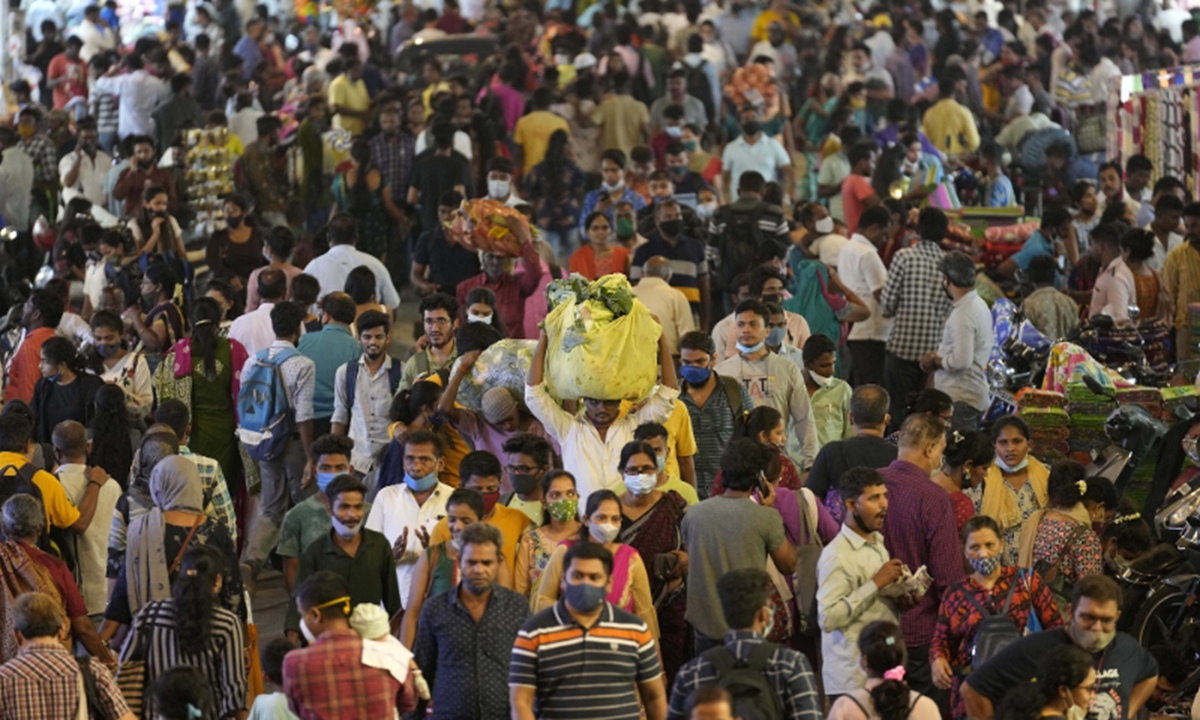India’s projected transition as the most populous country from China by mid-2023 presents opportunities for demographic advantage, but also requires focusing on the available demographic dividend. The population growth, size, and composition must be viewed from an empirical and scientific perspective to understand whether it is a dividend or a disaster.

India’s Population Projection
- A recent UN report provided the first official confirmation that India’s population will surpass that of China by the middle of this year at the latest.
- According to the UN Population Fund’s (UNFPA) annual State of World Population report, India’s mid-2023 population is 142.86 crore, which is 2.9 million more than China’s population.
What exactly is the State of the World Population Report?
- The United Nations Population Fund (UNFPA) publishes an annual report that provides a global overview of population trends and challenges.
- The report addresses a wide range of population-related issues, including fertility, mortality, migration, family planning, and gender equality.
- It also offers analyses and recommendations for policymakers and governments on how to handle demographic concerns and promote long-term development.
- The paper is widely considered as a must-read for population and development academics, policymakers, and international organisations.
How may India’s population expansion be used as a resource?
- A larger workforce: As the population grows, so does the workforce, which, if properly trained and employed, can contribute to economic growth and development.
- home market: As the population grows, so does the home market, which can fuel economic growth by boosting demand for goods and services.
- A larger population can give a larger pool of information and skill, as well as a more diversified spectrum of perspectives and ideas, which can lead to creativity and technical improvements.
- Infrastructure investment: Population expansion can open up opportunities for investment in infrastructure, education, and health, all of which can boost economic development.
- Cultural richness and diversity can result from a greater population. A diverse population brings with it a diverse set of languages, traditions, and cultural practises, all of which can contribute to a vibrant and dynamic society.
- Diplomatic clout: A higher population can offer a country more diplomatic clout on the global arena. India, being one of the world’s most populated countries, wields considerable diplomatic power and can use its demographic heft as a negotiating chip in international discussions.
How is India’s population growth a burden?
- Natural resources, such as water, food, and energy, may be put under strain as the population grows. This has the potential to cause environmental deterioration, shortages, and conflict.
- Unemployment: As the population grows, there may be a mismatch between the supply and demand for jobs, resulting in high unemployment rates, especially among young people.
- Poverty: Population increase has the potential to exacerbate poverty, particularly in rural regions and among marginalised groups. This can lead to social and economic inequality, as well as a lack of access to education, healthcare, and other fundamental necessities.
- Overpopulation: An increase in population can result in overpopulation, especially in urban areas. This can result in substandard living conditions, increased pollution, and health risks.
- Infrastructure: As the population grows, infrastructure such as transportation, housing, and sanitation may become overburdened. This can result in insufficient services and bad living conditions.
- Health: An rise in population can hasten the spread of disease and illness, especially in places with inadequate healthcare facilities. This can result in public health crises and lower life expectancy.
- Population expansion can put a pressure on education systems, especially when it comes to delivering a quality education to all. This has the potential to hinder social and economic mobility while also contributing to inequality.
- Migration: As the population grows, more people will move to cities, posing social and economic difficulties such as higher crime rates and inequality.
- The Asian Confluence (ASCON) in Tripura provided an excellent opportunity to analyse the evolving thinking of experts and policymakers. It demonstrated that the present decade may bring about game-changing shifts in the northeast, bringing the troika of Bangladesh, India, and Japan closer together.
Source: https://www.globaltimes.cn/page/202304/1289505.shtml
